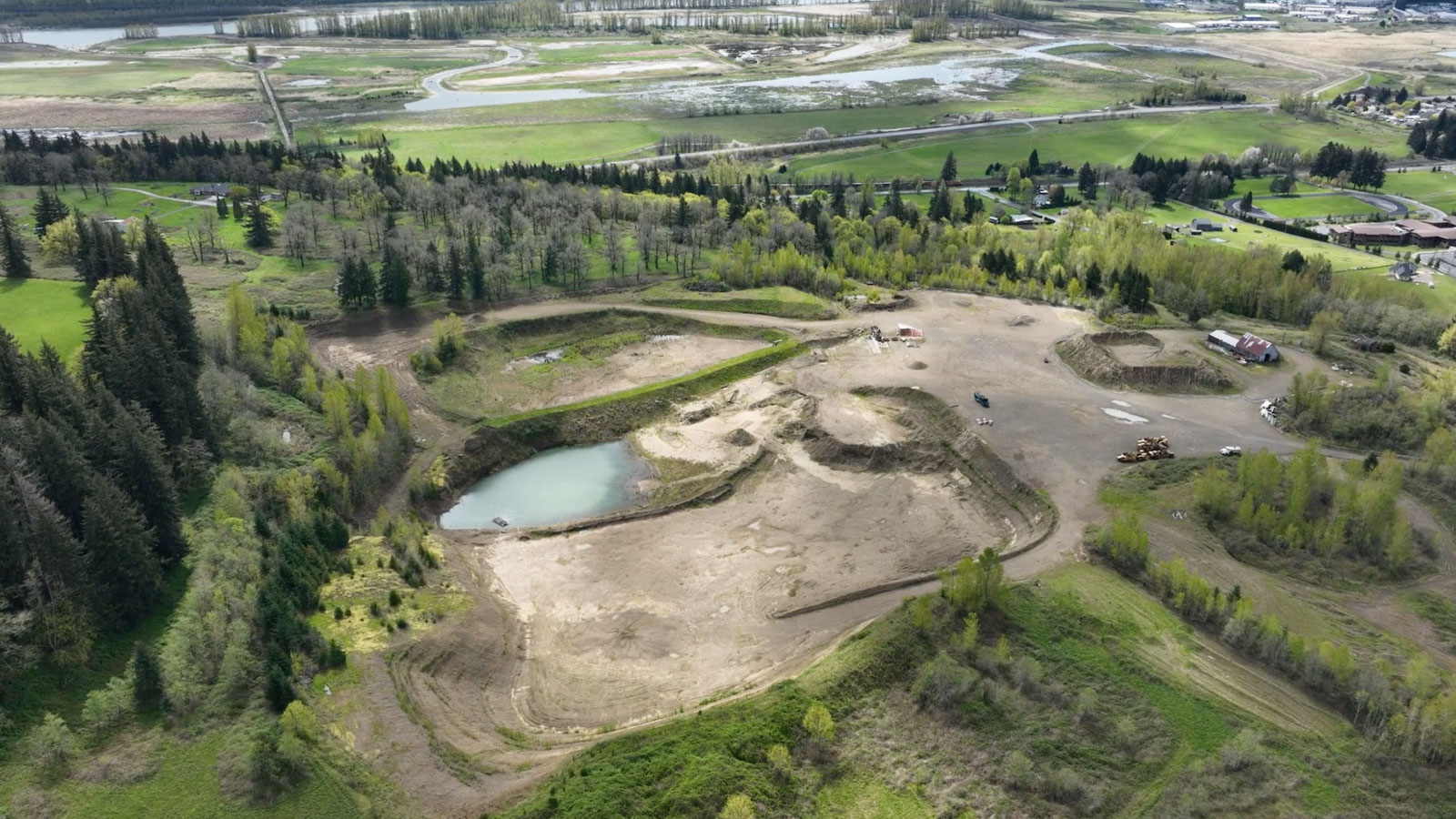The magnificent Columbia River Gorge is one of North America’s great natural wonders. Dividing Washington from Oregon, the Gorge begins where the Columbia and Deschutes rivers meet in the Cascade Mountains, creating a massive, 80-mile-long sapphire body of water, surrounded by the highest concentration of waterfalls in the world. The ecosystems here encompass everything from grasslands to rainforests, and are home to 25 endangered or threatened types of animals and plants. Two million tourists a year come to admire the Gorge’s incredible scenery.
“Geologically and aesthetically, the Columbia Gorge is magnificent,” says Chris Collins, a program lead with the non-profit Lower Columbia Estuary Partnership, which helps protect the lower Gorge. “The Columbia is one of the largest rivers in the country, and this is the path it uses to travel through the Cascade mountains. It’s incredibly dramatic.” He also highlights its critical nature from a conservation perspective: “Every single salmon in eastern Oregon, eastern Washington, and Idaho passes through the Gorge down to the ocean and back up again to spawn,” he says. “There are nine federally listed fish species that use the Gorge. That’s a lot of endangered fish.”
But despite the unique and fragile nature of the region, the Nutter Corporation, a mining and road-building company reopened a long-abandoned mine on land owned by the Zimmerly family in 2017. The property is perched on the western edge of the federally-protected Columbia River Gorge National Scenic Area, and their gravel mining operation launched without the required land use permits from Clark County. The mine created environmental hazards, as dirt carried by the trucks contaminated drainage ditches that flow into nearby salmon habitats, and impacted local families with the noise and traffic. For over two years, the mine continued to operate in violation of the National Scenic Area rules, until a group of concerned residents and the Friends of the Columbia Gorge, a Portland-based conservation group, succeeded in holding the operators accountable.
An illegal mine and a company with a history of environmental abuses
When Rachel Grice and her family moved to the Columbia Gorge area in January of 2018, they believed they were buying a home in a peaceful and safe community, where her four children could grow up surrounded by the region’s natural beauty. But as soon as they unpacked their moving boxes, massive, double-loaded mining trucks began barrelling down their small rural street. Grice soon learned that in late 2017, the long-dormant gravel operations had restarted, without obtaining any of the multiple permits required by Clark County.
As the mining ramped up, so did the impact on her family. “The noise was constant,” says Grice, who homeschools her children in a converted garage facing the street. “It was so loud, truck brakes squealing, exhaust, dust. We started counting the trucks, and we documented 180 round trips per day—180 trucks going up to the mine, picking up a load, and coming back down our street. The trucks would start as early as 6:30 A.M.” The traffic peaked at 220 trucks a day in the summer of 2018.

Sean Streeter, who lives near Grice, experienced the same disruption as the mine extended operating hours into the night. “I could hear them going until 10:00 P.M.,” he says. “And the backup beepers! I work from home, and all I heard all day was the beepers and the constant din of their mining machines.”
Safety was a concern, too. Grice’s children couldn’t walk or ride their bikes on their rural street because of the constant traffic, and daily walks with their dogs were stressful and dangerous. In July of 2018, the brakes failed on a truck coming from the Zimmerly mine, loaded heavily with gravel. It careened down the hill across a thoroughfare that serves the nearby elementary and middle schools, and destroyed a large section of train tracks. “We dodged a bullet,” Streeter says. If it hadn’t been summer, and school had been in session, “the timing was right when the school buses would have been picking up kids.”
Despite repeated requests to reduce the noise and multiple enforcement notices from the county, the illegal mining continued. Indeed, Nutter and Zimmerly have a long history of violating land use laws. In one instance in the 1990s, Zimmerly constructed illegal drainage channels that drained millions of gallons of mining runoff into nearby Gibbons Creek and Steigerwald Lake. They received the largest fine issued to a gravel mining operation in Washington State history for the resulting salmon habitat destruction.
Community efforts yield a victory
Determined to fight back, local community members like Grice and Streeter began documenting the violations. Nathan Baker, senior staff attorney for Friends of the Columbia Gorge,started to build a case, connecting with families throughout the community. Half a dozen households actively participated, with a goal of getting the local authorities to enforce the laws Nutter and Zimmerly were blatantly violating.
The group’s initial efforts were not successful. Multiple mine closure orders from the county lacked penalties for the illegal operation, and Nutter and Zimmerly just continued mining.
“I didn’t truly understand the word ‘enforcement’ until I made this documentary,” says filmmaker Brady Holden, who collaborated with the Friends of the Columbia Gorge on a short film about the community’s efforts. “You can pass laws or build a case and win in court, but none of it matters unless someone enforces it. Someone needs to hold lawmakers and companies accountable.”
But Friends and its attorneys weren’t willing to give up. Grice, Streeter, and other residents helped assemble evidence, attended hearings, and provided testimony to the county and the Columbia River Gorge Commission. After two years—and dozens of hours of meetings and hearings—the group achieved a victory in 2019: The Gorge Commission determined the mining was illegal, and the county once again ordered Nutter and Zimmerly to stop.
But despite the Commission’s ruling, the illegal mining continued. “The thing that struck me most about Zimmerly and Nutter was their disregard for the community and the environment,” says Holden. “They were getting cease operation notices, but they kept mining.”
After six different enforcement orders and letters from the county, Nutter and Zimmerly finally halted the mine’s operations in 2020. “It was really a David and Goliath story,” says Nathan Baker, the Friends attorney who pursued the case. “Two powerful corporations were violating the law and harming the Gorge. The odds were stacked against us, but Friends of the Columbia Gorge and the neighbors teamed up to ultimately stop them.”
Celebrating victory, but more battles to come
While the local community can take a breath now that the digging has ceased, their success may be temporary. Zimmerly and Nutter are currently challenging the mine closure in court, litigating several different cases, while simultaneously applying for permits to reopen the mine. Their lawyers also assert that any new land use permits require only minimal environmental restrictions. Friends of the Columbia Gorge is once again fighting the mine operators in court: “We are in a long, drawn-out legal battle,” says Friends executive director Kevin Gorman. “But we’re in this for the long haul.” If the mining were to begin again, the consequences might also now include risking damage to a recently restored wetland downstream, the largest habitat restoration project ever completed on the lower Columbia River.
In the meantime, Gorman says that the local community will continue fighting to protect their region. “This case shows that people’s voices matter,” he says. “When people stand up, good things happen. These folks showed up, believed in the cause, and carried it through. When you have community members who do that, it has a profound effect.”
Friends of the Columbia Gorge works to protect, preserve, and steward the Columbia Gorge for future generations. Learn more: gorgefriends.org or follow at @GorgeFriends




